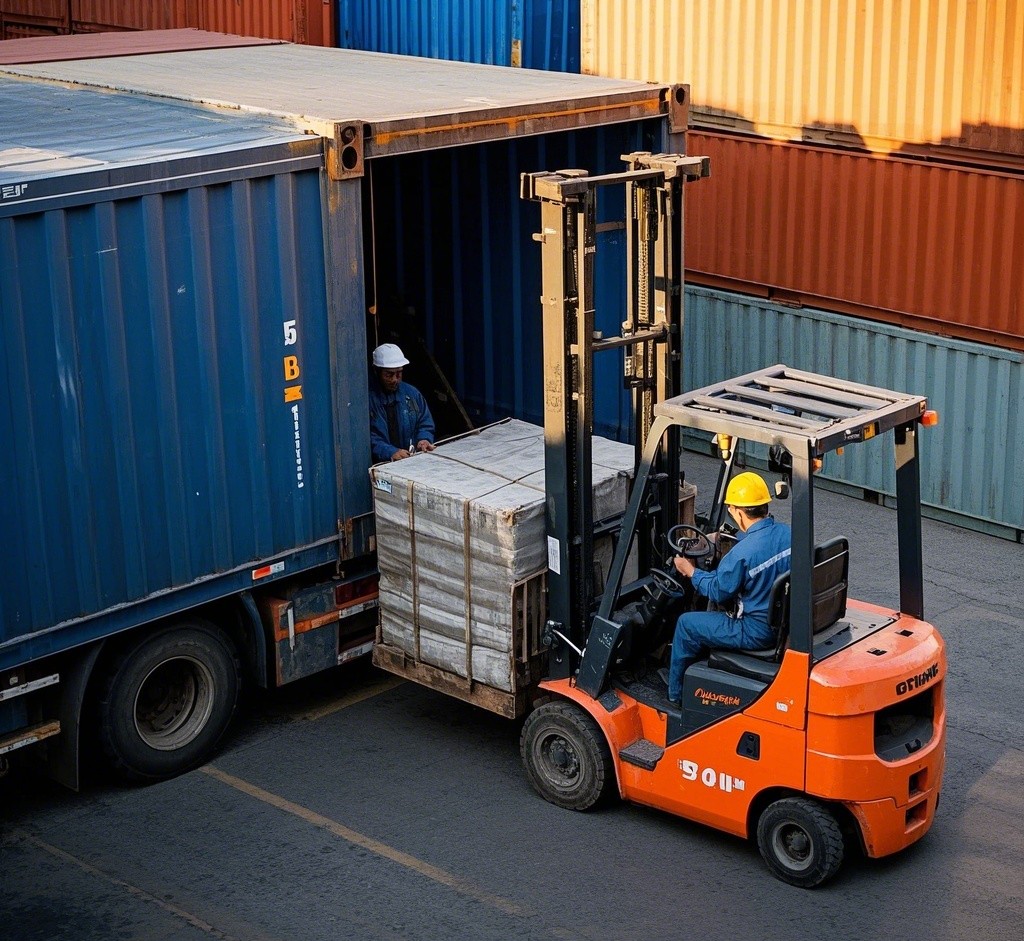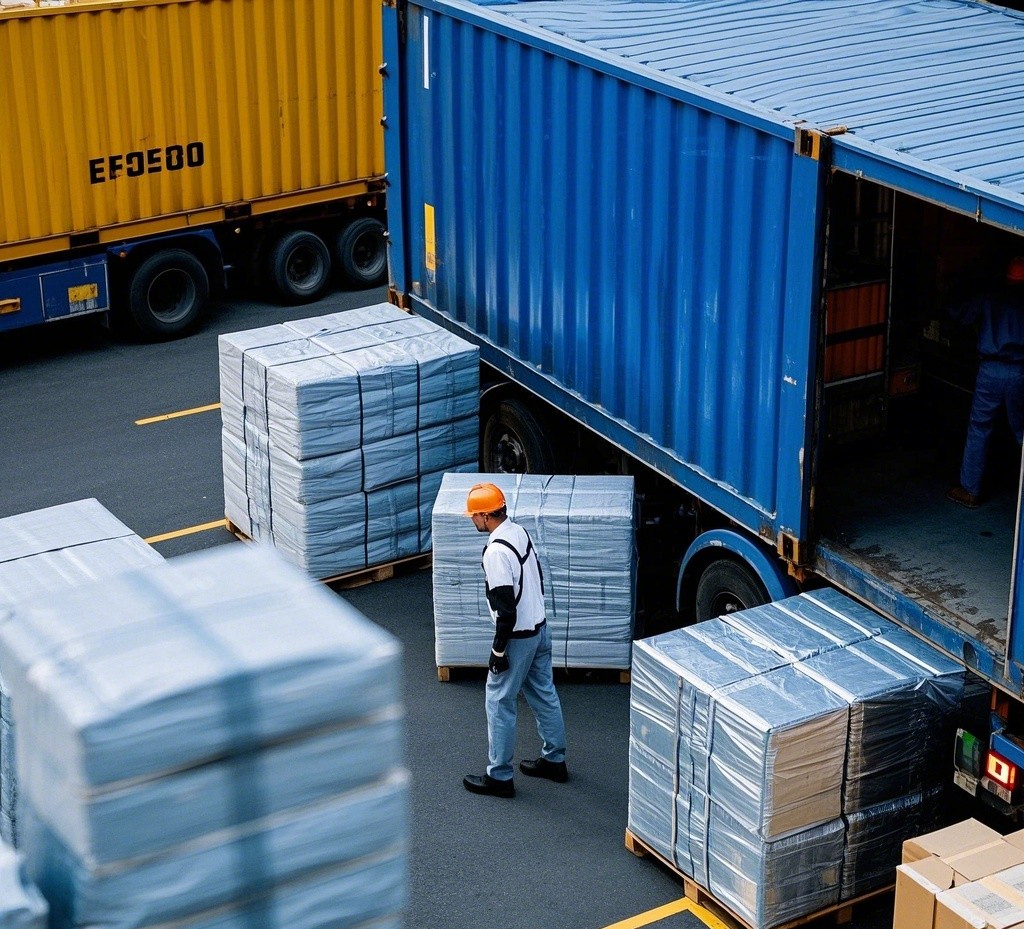مع استمرار نمو التجارة بين الصين وروسيا (لتتجاوز 200 مليار دولار أمريكي عام 2023)، أصبحت تكاليف اللوجستيات عبر الحدود وأوقات النقل مصدر قلق بالغ للشركات. غالبًا ما تواجه وسائل النقل التقليدية تحديات مثل الإجراءات الجمركية المعقدة، وعمليات التفتيش المتعددة، والرسوم الخفية المرتفعة. يمكن للنقل عبر TIR (النقل الدولي عبر الطرق)، بفضل آلياته الجمركية الفعّالة، أن يساعد الشركات على توفير ما بين 15% و30% من إجمالي التكاليف. تتناول هذه المقالة المنطق التشغيلي للنقل عبر TIR، واستراتيجيات تحسين التكاليف، وحلولًا للمشاكل الحدودية الشائعة بين الصين وروسيا.
نظام النقل البري الدولي (TIR)، المُنشأ بموجب اتفاقية الأمم المتحدة للنقل البري الدولي (TIR)، هو نظام نقل جمركي دولي يُبسّط ويُوحّد الإجراءات الإدارية للنقل البري الدولي. يسمح هذا النظام بنقل البضائع عبر عدة دول بأقل قدر من عمليات التفتيش الجمركي، مما يُقلّل أوقات العبور والتكاليف. في ديسمبر 2020، بلغ عدد الأطراف في الاتفاقية 77 طرفًا، منها 76 دولة والاتحاد الأوروبي.

الميزات الرئيسية:
ضمان جمركي واحد: تُغلَق البضائع في مركبات أو حاويات معتمدة من الجمارك، ويبقى ختم الجمارك سليمًا طوال الرحلة. يوفر هذا النظام ضمانًا ماليًا يغطي الرسوم والضرائب الجمركية، مما يضمن أمن السلطات الجمركية.
التوثيق الموحد: تعتبر بطاقة TIR بمثابة وثيقة جمركية واحدة ووثيقة ضمان، مما يحل محل الحاجة إلى وثائق وطنية متعددة ويقلل الأعباء الإدارية.
تطبيق واسع: يُعد نظام TIR مناسبًا لأنواع مختلفة من البضائع، بما في ذلك الحاويات والشاحنات الكاملة والبضائع السائبة، مما يجعله حلاً متعدد الاستخدامات للنقل الدولي.
أمثلة على الطرق:
الصين (هاربين/مانتشولي) → روسيا (موسكو/سانت بطرسبرغ)
الصين → كازاخستان → روسيا (عبورًا عبر آسيا الوسطى)
تحسين كفاءة الجمارك، وخفض تكاليف الوقت
الطريقة التقليدية: يتطلب كل معبر حدودي التفتيش الجمركي، مما يؤدي إلى تأخير لمدة تتراوح بين 3 إلى 5 أيام.
طريقة TIR: بفضل أختام الجمارك السليمة، تمر البضائع عبر الحدود مع الحد الأدنى من عمليات التفتيش، مما يوفر ما يصل إلى 80% من وقت العبور. →انقر هنا للتفاصيل
دراسة الحالة: نجحت شركة إلكترونيات في تقليص وقت النقل من موسكو إلى شيآن من 22 يومًا إلى 10 أيام باستخدام النقل عبر TIR.
انخفاض التكاليف المخفية
تخفيض تكاليف الضمان: تحل بطاقة TIR محل الضمانات الجمركية الفردية في كل بلد، مما يوفر ما بين 5000 إلى 20000 ين لكل رحلة.
تجنب رسوم التخزين: تعمل التخليص الجمركي السريع على منع تخزين البضائع في المستودعات، مما يلغي رسوم التخزين الإضافية.
تحسين المسار - تجنب "المزالق الخفية"
توصيات الطرق ذات التكلفة العالية:
المسار أ (أولوية الوقت): مانزولي → تشيتا → نوفوسيبيرسك (حوالي 2100 كم، 7 أيام).
المسار ب (أولوية التكلفة): خورغوس → ألماتي → موسكو (يمر عبر آسيا الوسطى، تكاليف شحن أقل بنسبة 15%).
دليل المصائد:
"تجنب طريق ياكوتسك في الشتاء (من ديسمبر إلى فبراير): البرد القارس يزيد من استهلاك الوقود بنسبة 40%!"
ضمان أمان عالي
ويضمن استخدام الأختام الجمركية وتتبع نظام تحديد المواقع العالمي (GPS) بقاء البضائع محمية من العبث طوال الرحلة، مع معدل خسارة أقل من 0.1%.

مقارنة:
| وجه | النقل التقليدي عبر الحدود | النقل البري الدولي (TIR) |
|---|---|---|
| التخليص الجمركي | عمليات تفتيش متعددة لكل بلد | تفتيش واحد عند المغادرة |
| التوثيق | العديد من الوثائق الوطنية | بطاقة TIR واحدة للطريق بأكمله |
| التكاليف المخفية | الضمانات ورسوم التخزين وتكاليف الترجمة | ضمانات مخفضة، وفورات بنسبة 30% في الرسوم الإضافية |
| البضائع المطبقة | السلع العامة فقط | البضائع العامة والخطرة وعالية القيمة (مع التسجيل) |
العدد 1: الإقرارات الجمركية المعقدة في روسيا تؤدي إلى التأخير
استراتيجيات TIR:
استخدام أنظمة الإعلان المسبق (على سبيل المثال، الإعلان الإلكتروني FCS في روسيا) بالاشتراك مع دفاتر TIR.
توفير أوصاف البضائع باللغة الروسية لتجنب أخطاء الترجمة.
العدد 2: ارتفاع تكاليف النقل خلال أشهر الشتاء
حلول TIR:
اختر المركبات التي يتم التحكم في درجة حرارتها والمعتمدة من TIR لتقليل خسائر البضائع بسبب التقلبات في درجات الحرارة.
دمج الشحنات خلال مواسم الذروة للاستفادة من اقتصاديات الحجم وتقليل تكاليف الوحدة.
إعداد المؤهلات:
في الصين، يمكنك التقدم بطلب للحصول على ترخيص شركة النقل البري الدولي (TIR) من خلال جمعية النقل البري الصينية (CRTA)، التي تصدر وتضمن بطاقات النقل البري الدولي (TIR).
اختيار الشريك:
التعاون مع شركات الخدمات اللوجستية التي تحمل تراخيص TIR الصينية والروسية لضمان خدمة سلسة من البداية إلى النهاية.
تقدير التكلفة:
اتصل بمقدمي الخدمات اللوجستية مع تفاصيل حجم البضائع ووجهتها للحصول على عروض أسعار دقيقة.

باعتبارها المزود الرائد لخدمات النقل البري الدولي بين الصين وروسيا، نقل حاويات السكك الحديدية العزيزة العروض:
دعم العملاء ثنائي اللغة على مدار الساعة طوال أيام الأسبوع: تتبع حالة الشحنة في الوقت الحقيقي باللغتين الصينية والروسية.
خطط التأمين المخصصة: تغطية شاملة طوال رحلة الشحنة.
الطرق ذات الأولوية خلال مواسم الذروة: رحلات منتظمة إلى روسيا، مما يضمن التسليم في الوقت المناسب حتى خلال فترات الطلب المرتفع.
✅يمكن نقله ولكن يتطلب تحضيرات إضافية:
رخصة نقل المواد الكيميائية الخطرة في الصين
▷ الصين-أوروبا إكسبريس: حوالي 18 يومًا (بما في ذلك تغييران للمسار)
▷ شاحنة TIR: ١٢ يومًا (المسار: تشونغتشينغ→أورومتشي→ألماتي→سانت بطرسبرغ)